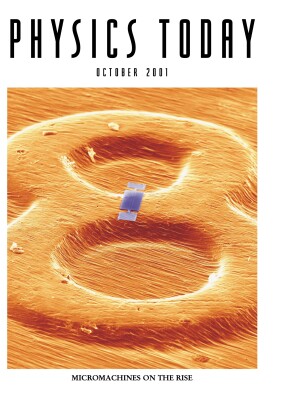Silicon Surfaces and Formation of Interfaces: Basic Science in the Industrial World
DOI: 10.1063/1.1420562
Silicon Surfaces and Formation of Interfaces , by Jarek Da̧browski and Hans-Joachim Müssig provides a welcome look at the basic sciences of silicon surfaces for the requirements of the fast-paced microelectronic industry. The industry is of enormous importance to communication and information infrastructures. The technology has now reached a level where atomic control of interfaces is a critical requirement for its future generations. Therefore, a wide range of engineers must be aware of the tools and methods that are at their disposal for characterizing and understanding the formation of interfaces, particularly in silicon-based devices. Conversely, surface scientists should learn about technological issues that are likely to benefit from their expertise. The tutorial nature of Silicon Surfaces and Formation of Interfaces makes it an insightful resource for both communities.
In the introductory chapter, the authors make a convincing case for the importance of fundamental surface science studies in silicon processing, which, unlike a field like catalysis, thrives on two-dimensional order and atomic perfection at interfaces, making silicon technology fully compatible with surface science techniques.
Da̧browski and Müssig devote three early chapters to background, including structural and dynamical properties of clean silicon surfaces. This historical description is fascinating, if not concise, and these chapters contain important basic and quantitative information that is nicely summarized in tables and figures. Many readers may skip the details of the controversies that characterized the early days of silicon surface science to focus on the current understanding of clean surfaces and the adsorption on and oxidation of silicon surfaces described in the later chapters.
Indeed, the latter part of the book beautifully summarizes the interactions of molecules with the silicon surfaces and thereby makes the important connection to the silicon oxidation and passivation that is so fundamental and critical to the microelectronics industry. It is particularly important and timely for technologists to appreciate the systematic steps taken to characterize and understand the reactions taking place during surface passivation, and to realize that wide gaps in understanding and lively controversies still exist.
In several areas, such as silicon oxide characterization, the authors skillfully provide a concise description of silicon processing technology, highlight the complementary aspects of existing characterization techniques, and incorporate the salient results of scientific investigations. Their discussion of the practical quality issues of the silicon/silicon oxide interface is of great benefit to surface scientists: it provides a concrete motivation for fundamental research. At the end of the book, Da̧browski and Müssig provide a clear tutorial of materials issues associated with real-life devices, thus enabling and enticing surface scientists to explore these complex issues. The synergy between technology and surface science that is highlighted in this book is a clear reflection of the authors’ expertise and the research focus of the Institute for Semiconductor Studies in Frankfurt, Germany, with which they are both associated.
Overall, this book constitutes a solid source of reference material, with over forty tables that conveniently summarize key references in each section. The references do not always reflect all the work done in the field, but they are exhaustive enough (over 1300) that the interested reader can eventually uncover some missing key contributions in the areas discussed.
Within a given chapter, the scope is sometimes uneven. In an attempt to provide in-depth information, the authors occasionally inject much of their own thinking and interpretation of existing work in some areas, while failing to give insight into others. This approach makes it difficult at times to separate educated speculation from established knowledge. Nonetheless, the discussions and opinions presented are welcome and stimulating, and always educational.
For a book of this length and depth, figures are noticeably scarce (only 82). Yet, the existing figures are uniformly well done with thorough captions, and the authors cleverly illustrate in the text itself the surface structures and adsorption sites, greatly clarifying the presentation. Additionally, the authors raise philosophical questions in the opening and concluding chapters of the book that tend to detract from the real value of this otherwise tutorial volume.
Despite these minor pitfalls, this book is well written and highly educational. I strongly recommend it for materials scientists interested in the properties of silicon as a microelectronic device material, and for micromechanical and photonics applications as well.
More about the Authors
Yves J. Chabal. Agere Systems, Murray Hill, New Jersey, US .
